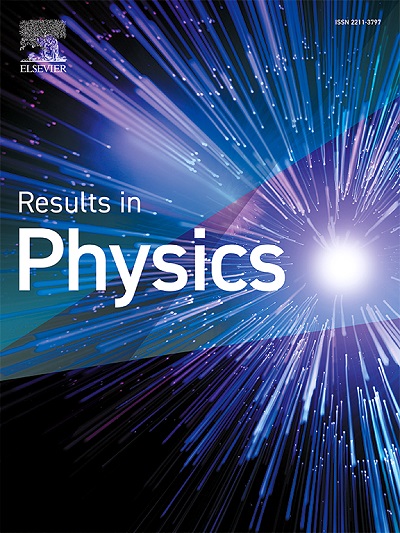Investigating the Characteristics of Fe3-xZnxO4 Nanoparticles: An Experimental and Theoretical Approach
IF 4.4
2区 物理与天体物理
Q2 MATERIALS SCIENCE, MULTIDISCIPLINARY
引用次数: 0
Abstract
This study investigates the structural, electronic, and magnetic properties of Fe3-xZnxO4 nanoparticles to understand the effects of Zn doping. The nanoparticles were synthesized using the hydrothermal method, and their properties were analyzed through X-ray diffraction (XRD), Density Of States (DOS) calculations, and magnetic measurements, supported by first-principles simulations. The results revealed a cubic spinel structure, with the lattice parameter expanding as Zn2+ substitution increased due to its larger ionic radius. Electronic properties indicated semiconducting behavior, with band gaps of 1.02 eV for Fe3O4 (x = 0) and 1.85 eV for ZnFe2O4 (x = 1). Magnetization initially increased with Zn doping up to x = 0.2 but decreased at higher concentrations due to cation migration within the lattice. Fe3O4 exhibited a net magnetic moment of 4µB, while ZnFe2O4 showed antiferromagnetic ordering with zero net magnetic moment, consistent with theoretical predictions. The study concludes that Zn doping significantly influences the structural, electronic, and magnetic properties of Fe3-xZnxO4 nanoparticles, providing a comprehensive understanding of their functional characteristics. This study highlights the innovative integration of experimental and theoretical methods to investigate the impact of Zn substitution on Fe3O4 nanoparticles, representing a novel contribution to the field.
研究Fe3-xZnxO4纳米颗粒的特性:实验和理论方法
本研究考察了Fe3-xZnxO4纳米颗粒的结构、电子和磁性能,以了解锌掺杂对其的影响。采用水热法合成了纳米颗粒,并通过x射线衍射(XRD)、态密度(DOS)计算和磁性测量分析了它们的性质,并采用第一性原理模拟支持。结果表明,该材料为立方尖晶石结构,其晶格参数随着Zn2+取代量的增加而扩大。Fe3O4 (x = 0)的带隙为1.02 eV, ZnFe2O4 (x = 1)的带隙为1.85 eV。当掺杂到x = 0.2时,磁化强度开始增加,但在更高浓度下,由于晶格内阳离子迁移,磁化强度下降。Fe3O4的净磁矩为4µB,而ZnFe2O4表现出反铁磁有序,净磁矩为零,与理论预测一致。研究结果表明,掺杂Zn对Fe3-xZnxO4纳米颗粒的结构、电子和磁性能有显著影响,从而对其功能特性有了全面的了解。该研究强调了实验和理论方法的创新结合,以研究锌取代对Fe3O4纳米颗粒的影响,代表了该领域的新贡献。
本文章由计算机程序翻译,如有差异,请以英文原文为准。
求助全文
约1分钟内获得全文
求助全文
来源期刊

Results in Physics
MATERIALS SCIENCE, MULTIDISCIPLINARYPHYSIC-PHYSICS, MULTIDISCIPLINARY
CiteScore
8.70
自引率
9.40%
发文量
754
审稿时长
50 days
期刊介绍:
Results in Physics is an open access journal offering authors the opportunity to publish in all fundamental and interdisciplinary areas of physics, materials science, and applied physics. Papers of a theoretical, computational, and experimental nature are all welcome. Results in Physics accepts papers that are scientifically sound, technically correct and provide valuable new knowledge to the physics community. Topics such as three-dimensional flow and magnetohydrodynamics are not within the scope of Results in Physics.
Results in Physics welcomes three types of papers:
1. Full research papers
2. Microarticles: very short papers, no longer than two pages. They may consist of a single, but well-described piece of information, such as:
- Data and/or a plot plus a description
- Description of a new method or instrumentation
- Negative results
- Concept or design study
3. Letters to the Editor: Letters discussing a recent article published in Results in Physics are welcome. These are objective, constructive, or educational critiques of papers published in Results in Physics. Accepted letters will be sent to the author of the original paper for a response. Each letter and response is published together. Letters should be received within 8 weeks of the article''s publication. They should not exceed 750 words of text and 10 references.
 求助内容:
求助内容: 应助结果提醒方式:
应助结果提醒方式:


